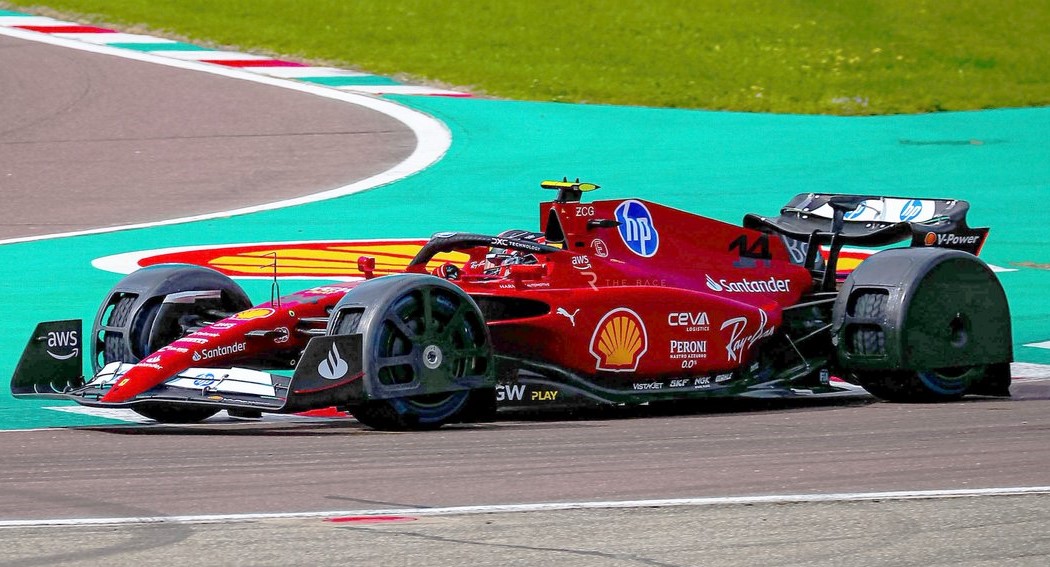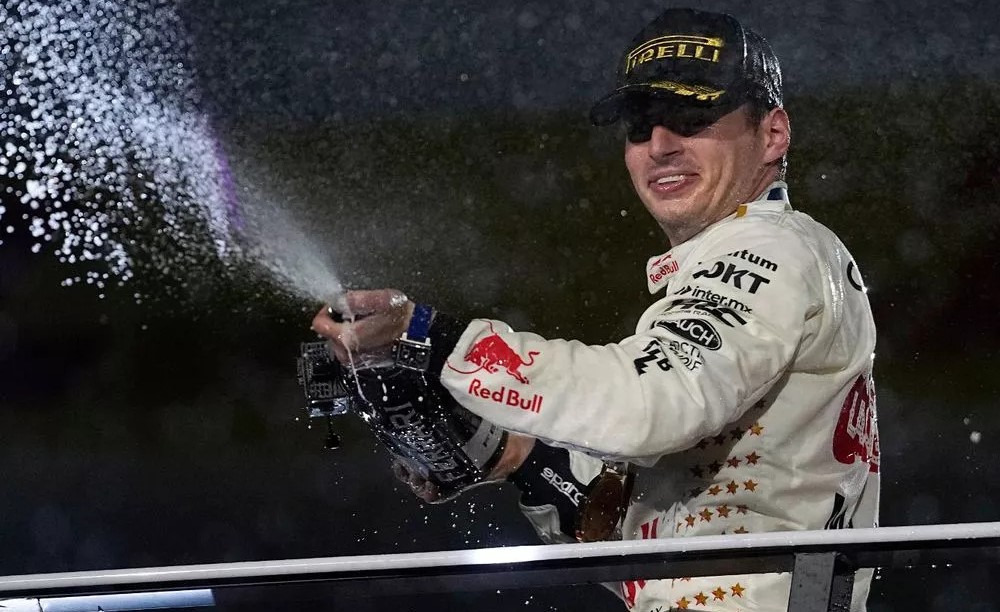Ferrari has tested spray guards which have been designed to significantly reduce spray in poor weather in a private FIA shakedown at the Fiorano Circuit.
On Thursday, the Ferrari F1 team tested the recently designed spray guards on the wheel covers at their home testing site in Fiorano, Italy which the FIA hopes will improve driver visibility during wet racing conditions.
The opportunity to drive Ferrari’s 2023 SF-75 was extended to Arthur Leclerc, the younger brother of the team’s full time driver Charles Leclerc. The car sported the spray guards which fully covered front and rear wet weather tyres, featuring two holes in the front.
The sheer amount of spray generated by F1 cars has long been a challenge for the sport; in recent years, heavy rain has led to postponement of races, including the 2021 Belgian Grand Prix after drivers raised concerns about poor visibility.
The Fiorano test run comes after an unsuccessful trial of a less aggressive design with Oscar Piastri and Mick Schumacher at Silverstone last year. However, based on images that surfaced on social media, the updated design that was tested on Thursday seems to offer a more thorough cover of the car’s wheels.
The assessment was carried out independently by the FIA, which is leading the effort towards improving wet weather racing conditions. However, Bearman’s laps in the SF-24 will not be applied to the Italian team’s allotted mileage for filming days.
The wheel covers are part of what is known as the ‘Wet Weather Package’ (WPP) that F1 is looking to introduce to mediate the negative effects of excess spray. The hope is that, once finalised, the WPP will be a bolt-on kit for teams to use when there are adverse weather conditions.
FIA single-seater technical director Nikolas Tombazis said in a press briefing held during last year’s F1 season finale in Abu Dhabi that there would be additional information gathering to see if that is the right path.
“Things would have to go reasonably well to have it in 2025,” Tombazis explained. “If that fails, then it would have to be 2026. It would be part of the new package of regulations.
“Alternatively, if the test doesn’t go well in the spring, we may abandon that course and then have to really think about what we do.”
The main uncertainty hanging over the solution is what the root cause of the issue is, and whether it will ultimately fix the problem. The approach employed during the test at the Fiorano Circuit is more drastic than the one used last year, but that does not mean it will be the end product.
“What we still doubt is what proportion of the problem is due to the overall diffuser and sucking the water from the track, which is something this thing won’t fix, and how much of it is because of the wheels,” Tombazis added.
“We know both factors are significant, so we’re not aiming to solve everything. We know there will still be visibility issues.
“It would be too complicated to do on a set of regulations with cars that have to be in one configuration when it’s dry and to change when it’s wet. That would be probably a bit too complicated.
“If we conclude that the main factor is the diffuser, first of all, the direction the ’26 regulations are going, it would probably be a step improvement. Secondly, we would then be able to focus some of the work there and see what more we can do.”
He also emphasized the significant technical hurdles involved in developing an effective spray guard system.
“Having started this project towards the end of last year, and done quite a lot of CFD simulations, we did understand quite soon that it was not quite as simple as just put something on, off you go, and you’re done,” he said, quoted by Motorsport.com.
“We didn’t want to lose too much performance of the cars and mess up the aerodynamics too much. Although some of it is inevitable.
“And the actual aerodynamic load on these big mudguards or whatever you call them, if you have a complete cover, that would have quite high dynamic load. And therefore their support on the uprights would have to be fairly robust to not fly off at 300km/h.”





